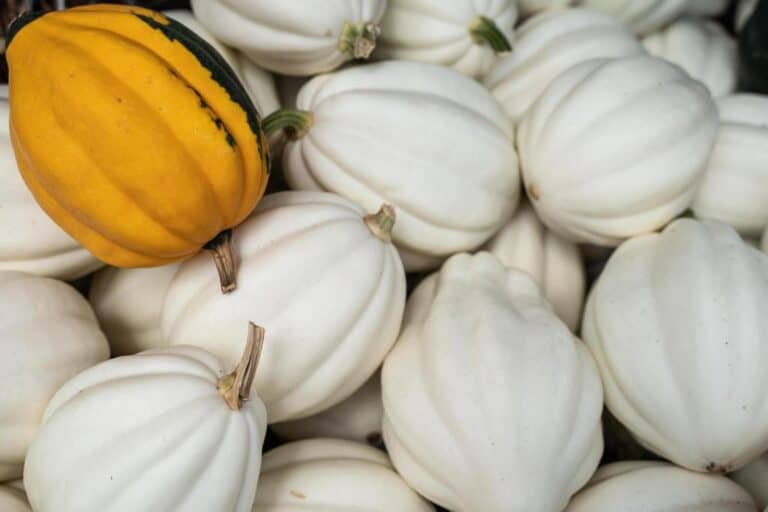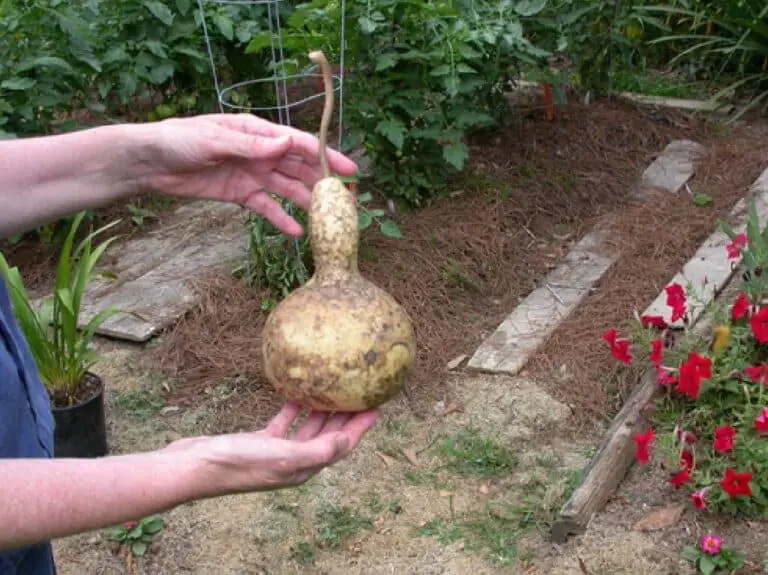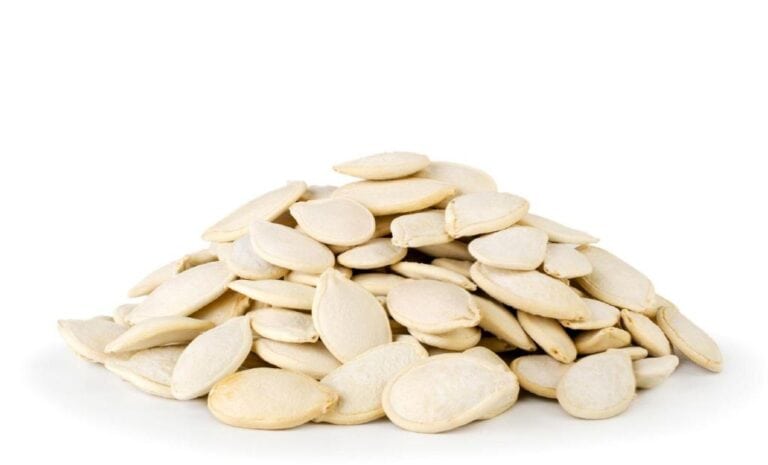Are There Male and Female Watermelons? What Are the Differences?
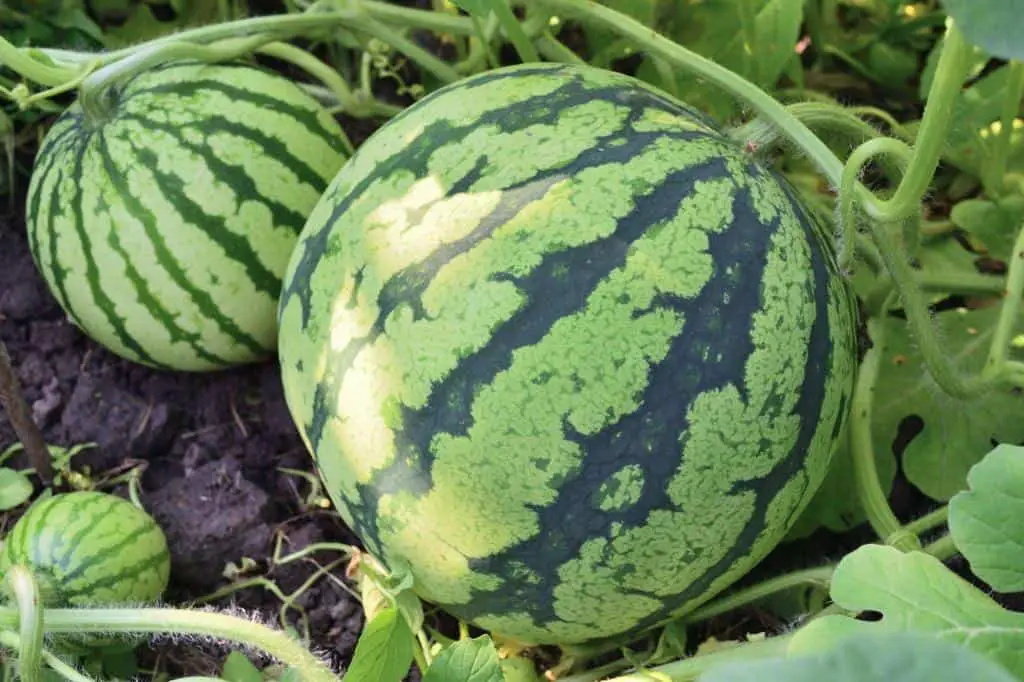
Watermelons, those quintessential summer treats that conjure images of picnics and lazy days in the sun, have always held an air of mystery, particularly when it comes to their gender. Are there male and female watermelons? What exactly are the differences, if any? It’s a question that has puzzled many, and we’re here to unravel the juicy truth.
In this delightful exploration of the world of watermelons, we’ll journey into the heart of this vibrant fruit, dissecting the concepts of “male” and “female” watermelons. We’ll unveil the fascinating biology behind their development, the factors that contribute to their flavors and textures, and whether gender even plays a role in their sweet symphony.
Prepare to be surprised as we bust myths and cultivate a deeper understanding of the watermelon world. Whether you’re a fruit enthusiast, a curious connoisseur, or simply someone who enjoys a refreshing slice on a scorching day, this article will quench your thirst for knowledge about the gender dynamics of watermelons. So, let’s slice into this delicious topic and uncover the secrets of these beloved fruits.
Watermelon Anatomy Basic
Understanding the basic anatomy of a watermelon is a fascinating journey into the inner workings of this iconic summer fruit. Let’s take a closer look at the key components that make up a watermelon:
1. Outer Rind: The outermost layer, often thick and green, is the watermelon’s protective rind. It shields the juicy interior and helps retain moisture within the fruit.
2. Flesh: Beneath the rind lies the succulent flesh, which is the part we love to eat. Watermelon flesh can vary in color from bright red to pale pink or even yellow, depending on the variety.
3. Seeds: In traditional watermelon varieties, small black seeds are scattered throughout the flesh. However, seedless watermelons are increasingly popular for their ease of consumption.
4. Core: The core runs vertically through the center of the fruit. It’s often less juicy and slightly firmer than the surrounding flesh.
5. Hollow Cavity: This hollow space near the core contains some seeds and less flesh. It’s a bit more fibrous and less appealing for eating.
The flowers are where the magic happens, as they contain the reproductive parts responsible for fruit production.
- Male Flowers: Male watermelon flowers have stamens that produce pollen. They lack fruit-bearing ovaries.
- Female Flowers: Female watermelon flowers have pistils and ovaries, which are essential for fruit development.
Explanation of Watermelon Reproduction and Pollination
Watermelon reproduction is a fascinating process that culminates in the sweet, juicy fruit we savor during the summer. To understand this journey, it’s essential to delve into the intricacies of watermelon anatomy and reproduction.
Watermelon plants have both male and female reproductive structures, much like other flowering plants. These structures are critical for the development of the watermelon fruit.
Male flowers, as their name suggests, produce pollen, which contains the genetic material necessary for fertilization. Female flowers, on the other hand, play a pivotal role in fruit development. They contain the ovaries, where the fruit begins to form after successful pollination.
Pollination is the key to this whole process. Watermelons depend on pollinators, especially bees, to transfer pollen from the male flowers to the female flowers. This transfer results in fertilization and the initiation of fruit development. For this reason, having both male and female watermelons in a garden or field is crucial to ensuring successful pollination and a bountiful harvest.
Genetic and environmental factors also come into play in determining the gender of watermelon plants. While genetics predisposes certain varieties to produce more male or female flowers, environmental conditions, such as temperature and light exposure, can influence the ratio of male to female flowers on a single plant. This dynamic interplay between genetics and the environment further highlights the complexity of watermelon reproduction.
Read: Are Seedless Watermelons Self Pollinating?
Are There Male and Female Watermelons?
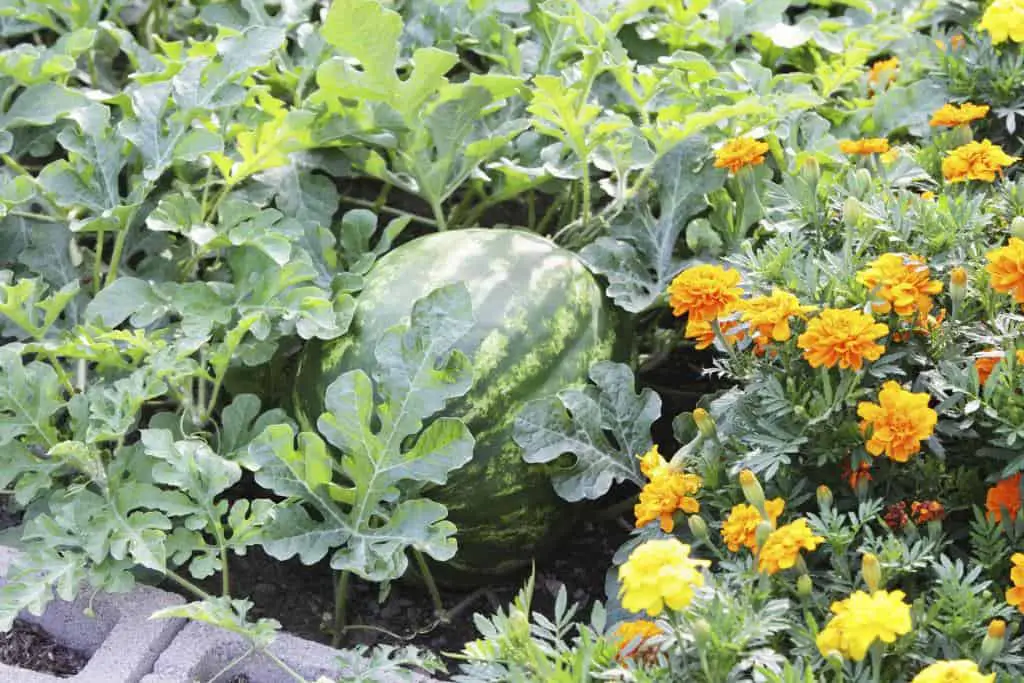
Watermelons are not classified as male or female. Watermelons, unlike certain plant species that exhibit distinct male and female entities, follow a unique reproductive pattern that involves the production of both male and female flowers on the same plant. Although these flowers coexist, it’s the female blooms that bear the coveted fruits, while the male flowers play a crucial role in the pollination process.
Within the vibrant expanse of a watermelon plant, identifying a male flower is relatively straightforward, as it typically emerges in a separate section compared to its female counterparts, contributing to the plant’s intricate reproductive dance.
In the realm of watermelon cultivation, the convergence of male and female flowers marks a pivotal phase where the transfer of pollen from the male to the female flowers sets the stage for fruit production. This symbiotic relationship between the plant’s floral components underscores the intricate mechanisms nature employs to ensure the propagation of these beloved fruits.
As the male flowers provide the essential pollen and the female flowers nurture the nascent fruit, the watermelon thrives within the harmonious embrace of its own biological rhythm, culminating in the succulent bounty that graces our tables and tantalizes our taste buds.
Differences Between Male and Female Watermelons
Now that we understand the basic anatomy and the difference between those two flowers, let’s explore the differences between male and female watermelons.
Physical Characteristics
Certain physical characteristics can distinguish male and female watermelons:
| Gender | Characteristics |
| Male Watermelon | Typically have longer stems. |
| Flowers lack a bulbous base. | |
| Female Watermelon | Shorter stems and a bulbous base. |
| Contain the potential for fruit. |
These differences in stem length and flower appearance make it easier to identify the gender of a watermelon plant.
Reproductive Roles
Each gender plays a unique role in the pollination process and fruit development.
- Male Watermelons: Male flowers produce pollen, which is essential for fertilizing the female flowers. However, male watermelons do not produce fruit themselves.
- Female Watermelons: Female flowers contain the ovaries, where the fruit begins to develop after successful pollination. They play a vital role in fruit production.
Cultivating Male and Female Watermelons
For gardeners, cultivating both male and female watermelons is essential for successful fruit production.
Tips for Cultivation
- Plant Variety: Choose watermelon varieties that are known for producing both male and female flowers.
- Spacing: Ensure adequate spacing between watermelon plants to allow pollinators to move freely between them.
- Pollinator-Friendly Garden: Encourage pollinators like bees by planting nectar-rich flowers near your watermelon patch.
- Optimal Growing Conditions: Provide your watermelon plants with the right amount of sunlight, water, and nutrients to ensure healthy growth and abundant fruit production.
Hybrid Watermelon Varieties
Hybrid watermelons have gained popularity in recent years. Let’s explore how these hybrids relate to the concept of watermelon gender.
Hybrid watermelons are the result of controlled cross-breeding between different watermelon varieties. The goal is to create fruits that exhibit specific desirable traits, such as improved sweetness, size, and disease resistance.
Hybrid watermelon varieties can have varying gender characteristics. Breeders select parent plants with desired gender traits to achieve specific goals, such as enhancing fruit quality or ensuring seedlessness.
Do Seedless Watermelons Have Any Male Seeds?
Seedless watermelons are a delightful summertime treat, and if you’ve ever wondered about the presence of male seeds in them, the answer might surprise you. In essence, seedless watermelons don’t possess traditional male seeds. Instead, they’re the product of a specialized breeding process designed to eliminate these seeds, delivering that sweet, seed-free experience we love.
This unique breeding method involves crossing a diploid (two sets of chromosomes) female watermelon with a tetraploid (four sets of chromosomes) male watermelon. The result is a triploid (three sets of chromosomes) seedless watermelon, and it’s the triploidy that makes seed development nearly impossible.
While you might occasionally find small, undeveloped seed traces in seedless watermelons, these aren’t the same as the mature seeds found in traditional watermelon varieties. So when you relish the luscious, seedless goodness of a watermelon slice, rest assured that you’re savoring a meticulously crafted product of science and nature.
Watermelon Gender Myths and Facts
To conclude, let’s address some common myths and misconceptions about male and female watermelons.
Myth 1: Gender Affects Taste
Fact: The gender of a watermelon does not influence its taste. Flavor is determined by other factors such as variety and ripeness.
Myth 2: Male Watermelons Are Inedible
Fact: While male watermelons don’t produce fruit, they are not inedible. In fact, all parts of a watermelon plant are non-toxic and safe to eat.
Myth 3: Female Watermelons Are Sweeter
Fact: Watermelon’s sweetness is not determined by gender but rather by the sugar content and ripeness of the fruit.
Myth 4: You Can Change a Watermelon’s Gender
Fact: Gender in watermelons is primarily determined by genetics and cannot be changed.
Myth 5: Seedless Watermelons Have No Gender
Fact: Seedless watermelons have genders, but they lack mature seeds due to a specific breeding process.
In conclusion, male and female watermelons exist, but their gender differences are primarily related to reproductive roles and flower appearance. While these differences are important for pollination and fruit development, they don’t significantly affect the taste or quality of the fruit. The next time you enjoy a juicy slice of watermelon on a hot summer day,
FAQs on Male and Female Watermelons
Can male watermelons produce fruit?
No, male watermelons do not produce fruit. They play a crucial role in pollination but do not bear fruit themselves.
What factors influence the gender of a watermelon?
Genetic factors and environmental conditions can both influence the gender of watermelon plants.
Can you tell the gender of a watermelon from its appearance?
No, you cannot determine the gender of a watermelon from its appearance. Male and female watermelons generally look the same externally. The flowers that the plant produces and their reproductive processes determine gender.
Are seedless watermelons of a different gender altogether?
Seedless watermelons are not a different gender. They are typically sterile triploid hybrids that result from specific breeding techniques. They may lack male seeds, but they don’t have a gender in the traditional sense.
How can I encourage pollination in my watermelon garden?
To encourage pollination, plant both male and female watermelon varieties in close proximity. Attract pollinators like bees to your garden by planting nectar-rich flowers nearby. Avoid using pesticides that can harm pollinators and provide optimal growing conditions for healthy, vibrant plants.

